Color pencil sketching is a versatile and accessible art form that allows artists of all skill levels to create vibrant and expressive artwork. Whether you’re a beginner or an experienced artist, mastering the techniques and principles behind color pencil sketching can greatly enhance your creative expression. In this guide, we’ll explore different drawing ideas, understand color harmony, learn various pencil strokes, and even introduce an AI tool to help you colorize your sketches. By the end of this guide, you’ll have the knowledge and confidence to create beautiful colored pencil sketches.
4 Colored Pencil Drawing Ideas
Before diving into the technical aspects of color pencil sketching, it’s essential to have a clear idea of what you want to draw. Here are four inspiring drawing ideas to get you started:
1. Portraits
Creating a portrait with color pencils allows you to capture the intricate details and emotions of a person’s face. Start by selecting a reference photo, preferably one with good lighting and clear features. Begin with a light sketch of the facial structure, focusing on the proportions of the eyes, nose, and mouth. Use a range of colors to add depth to the skin tones, paying attention to shadows and highlights.
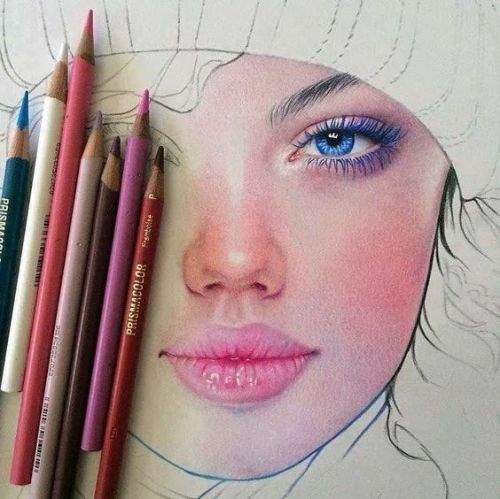
2. Birds and Animals
Birds and animals make for fascinating subjects in color pencil sketches due to their vibrant feathers and fur textures. When sketching an animal, start by capturing its basic shape and proportions. Use short, directional strokes to mimic the texture of fur or feathers. Experiment with various colors to create a lively representation of the animal’s natural hues.
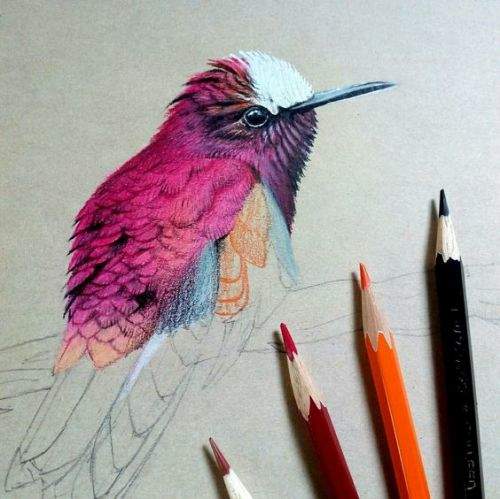
3. Dark Paper Sketch
For a dramatic effect, try sketching on dark-colored paper. This technique allows you to work with the highlights and mid-tones while leaving the dark areas of the paper exposed. Begin by lightly sketching your subject with a white or light-colored pencil. Gradually build up the colors, focusing on the areas where light hits the subject.
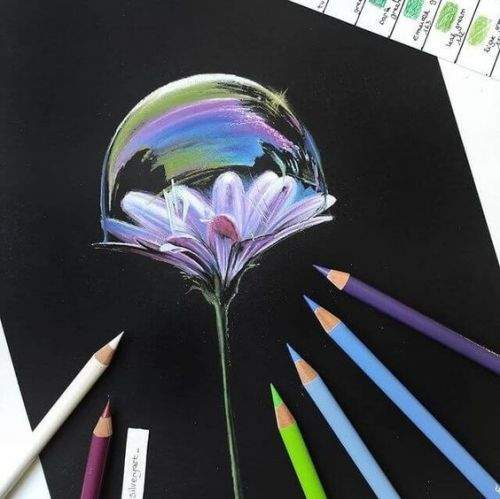
4. Landscape Drawing
Landscape drawing with colored pencils allows you to capture the beauty of nature. Choose a reference photo or draw from life, and start by sketching the basic shapes of the landscape. Use a variety of greens, blues, and earth tones to depict the natural scenery. Apply light, layered strokes to create a sense of depth and distance in your drawing.
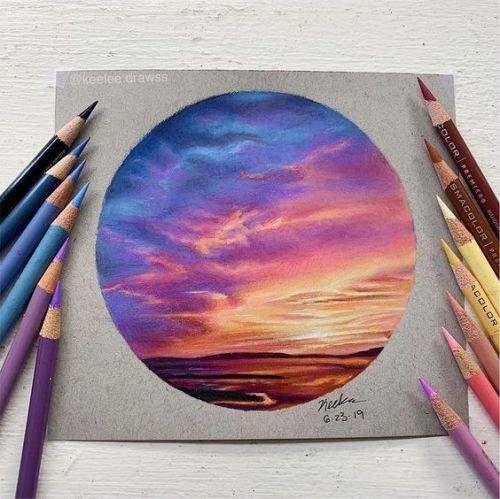
Instructions for Color Harmony
Understanding color harmony is crucial in creating visually appealing color pencil sketches. Color harmony refers to the aesthetically pleasing arrangement of colors in your artwork. By using a color wheel and understanding key concepts such as hue, value, chroma, color intensity, and local color, you can achieve harmonious and balanced compositions.
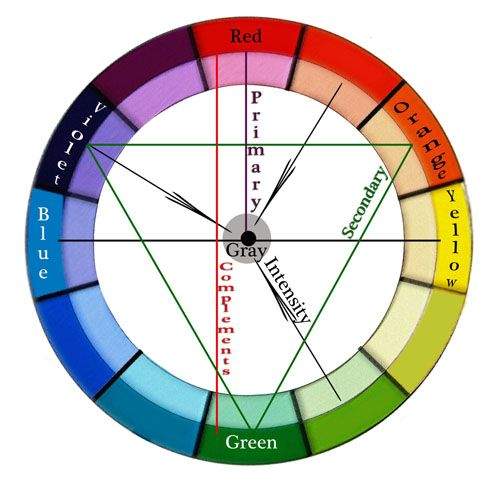
1. Hue
Hue refers to the pure color itself, such as red, blue, or yellow. It is the most basic attribute of color. When creating a color pencil sketch, choose hues that complement each other based on their position on the color wheel.
2. Value
Value refers to the lightness or darkness of a color. In color pencil sketching, manipulating value is essential for creating depth and dimension. Lighter values (tints) can be achieved by adding white or using less pressure, while darker values (shades) can be created by layering the color or adding black.
3. Chroma
Chroma, also known as saturation, describes the intensity or purity of a color. A highly saturated color is vivid and bright, while a color with low saturation appears muted or dull. In your color pencil sketches, use chroma to draw attention to specific areas or to create a mood.
4. Color Intensity
Color intensity refers to the brightness or dullness of a color, which is closely related to chroma. Intense colors can make your sketch more dynamic and lively, while duller colors can convey a sense of calm or melancholy. Adjusting the intensity of your colors can help you achieve the desired emotional impact in your artwork.
5. Local Color
Local color is the natural color of an object as perceived under normal lighting conditions. Understanding local color is essential when striving for realism in your color pencil sketches. For example, the local color of an apple might be red, but it could appear darker in the shadows and lighter in the highlights.
Choose the Appropriate Colored Pencil Strokes
The way you apply color to your sketch can dramatically affect the final outcome. Different pencil strokes can create various textures, effects, and levels of detail. Here are five essential colored pencil strokes to master:
1. Stippling
Stippling involves creating a series of small dots to build up color and texture. This technique is ideal for adding subtle shading or creating a textured effect in your sketch. Stippling requires patience, as it involves carefully placing each dot, but it can produce beautifully intricate results.
2. Hatching
Hatching is a technique where you draw parallel lines close together to create shading and texture. The density and direction of the lines can vary to achieve different effects. Hatching is useful for creating smooth gradients or adding texture to your color pencil sketch.
3. Cross-Hatching
Cross-hatching is an extension of hatching, where you add another layer of parallel lines in a different direction, crossing over the first set. This technique is great for building up darker values and creating a more complex texture.
4. Back and Forth Stroke
The back-and-forth stroke is a basic yet versatile technique where you simply move the pencil back and forth in a consistent motion to fill in an area with color. This stroke is ideal for creating smooth, even layers of color and is often used for base layers or large areas of a drawing. By varying the pressure, you can achieve different levels of color saturation and value.
5. Scumbling
Scumbling is a technique where you apply the pencil in a circular, scribbling motion to create a soft, textured effect. This method is excellent for blending colors and creating a more painterly look in your sketches. Scumbling is particularly effective for rendering organic textures like grass, clouds, or skin.
Use AI to Colorize the Sketch with FliFlik KlearMax for Photo
In the digital age, AI tools have become valuable assets for artists, offering new ways to enhance and experiment with their artwork. One such tool is FliFlik KlearMax for Photo, which is designed to help artists colorize their sketches with ease. Here’s how you can use this tool to add color to your color pencil sketch:
-
If you are a first-time user you can start by downloading the FliFlik KlearMax for Photo and then install it by following the on screen instructions.
FREE DOWNLOAD
Secure Download
Coming Soon
Secure Download -
Start by scanning or photographing your color pencil sketch and uploading it to the FliFlik KlearMax for Photo.
![Upload the Sketch Anime]()
-
Use the AI-powered colorization tool to automatically apply colors to your sketch. The AI will analyze the sketch and suggest color placements based on the lines and shapes. You can adjust the colors as needed to achieve the desired effect.
![KlearMax Sketch Colorization]()
-
Once you’re satisfied with the colorized version of your sketch, save the file and export it in your preferred format. You can then print the final artwork or share it digitally.
![Export the Image]()
Conclusion
Creating a color pencil sketch is a rewarding artistic process that combines creativity, technique, and a deep understanding of color. By exploring different drawing ideas, mastering color harmony, choosing the right pencil strokes, and even utilizing AI tools like FliFlik KlearMax for Photo, you can elevate your sketches to new levels of detail and vibrancy. Whether you’re drawing portraits, animals, landscapes, or experimenting with dark paper, the key to success lies in practice and a willingness to explore new techniques. With these tips and instructions, you’re well on your way to creating stunning color pencil sketches that truly stand out.
FREE DOWNLOAD
Secure Download
Coming Soon
Secure Download



